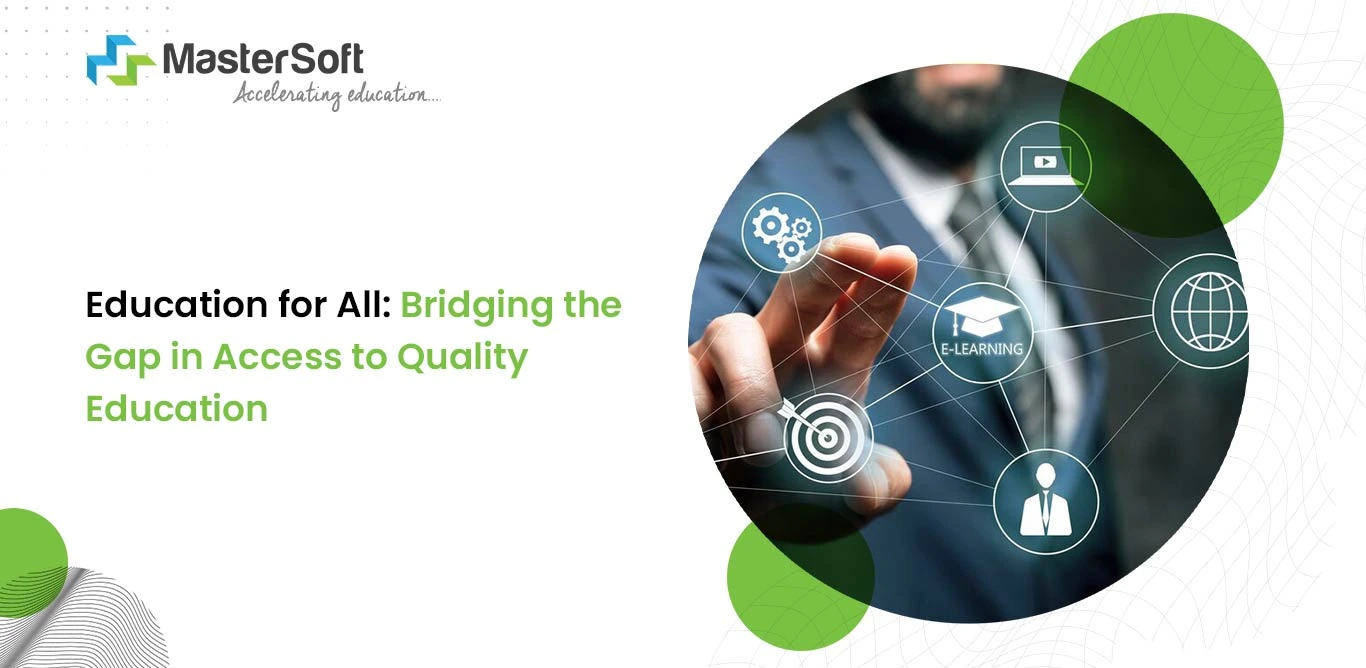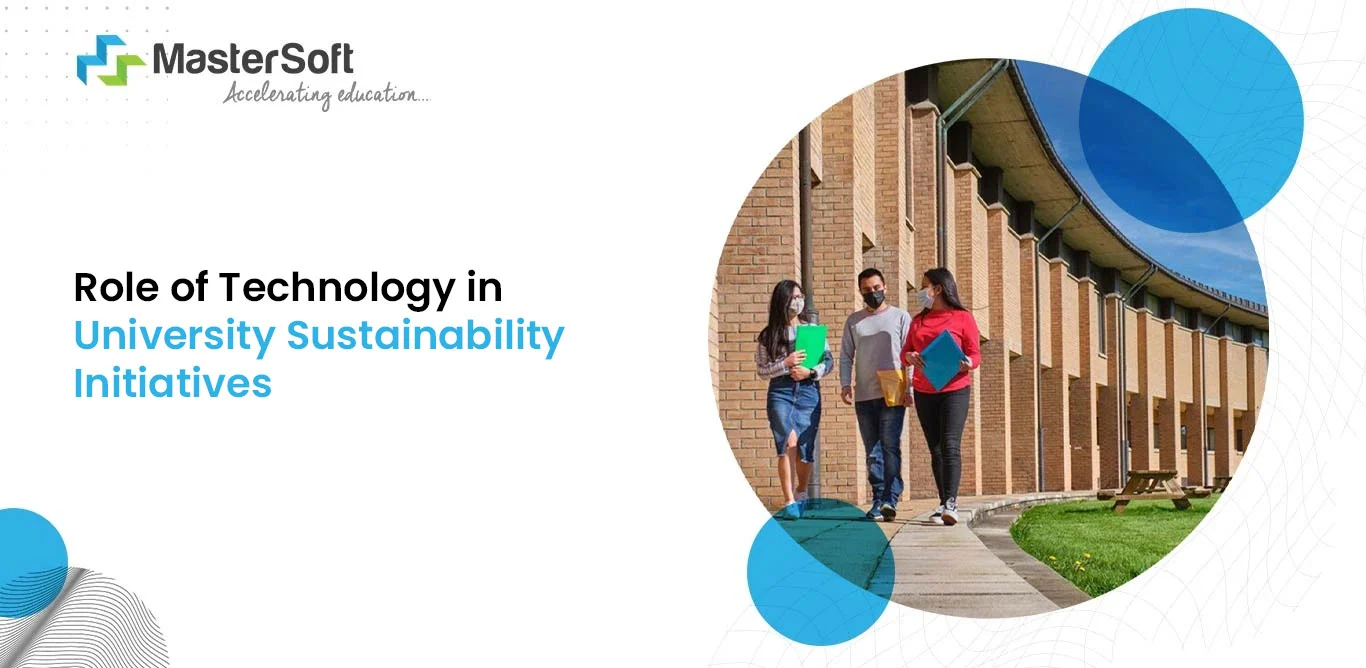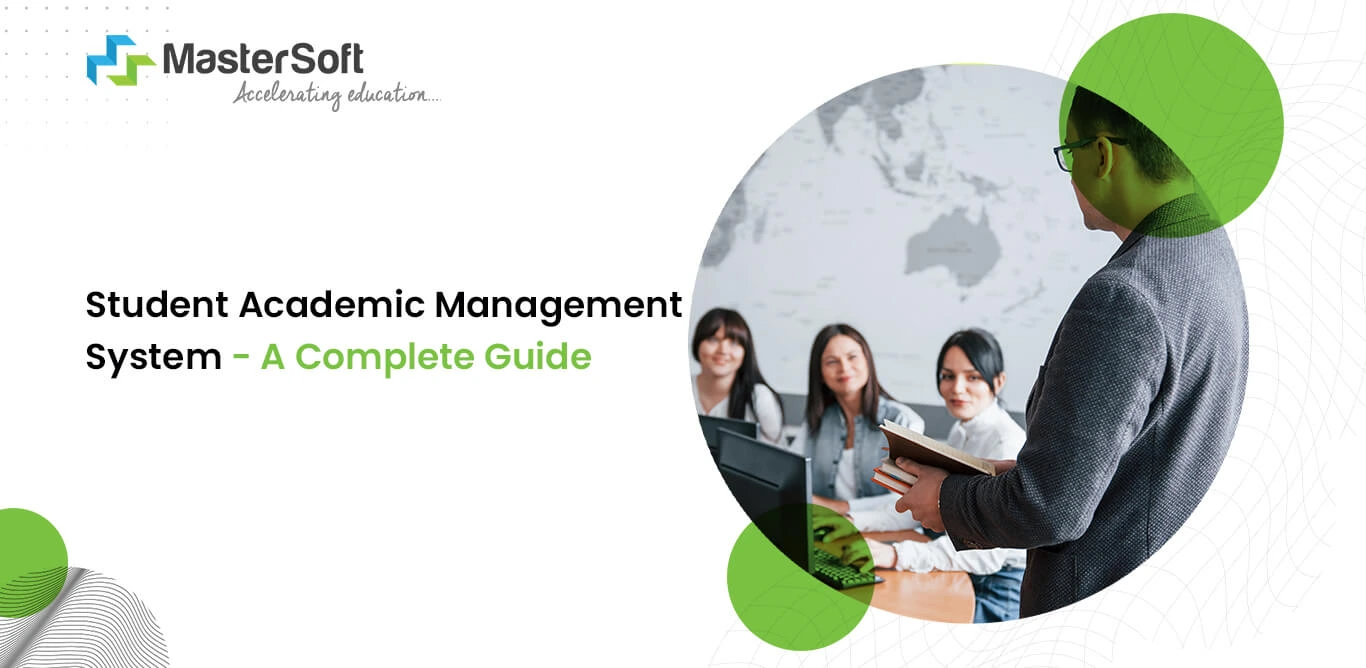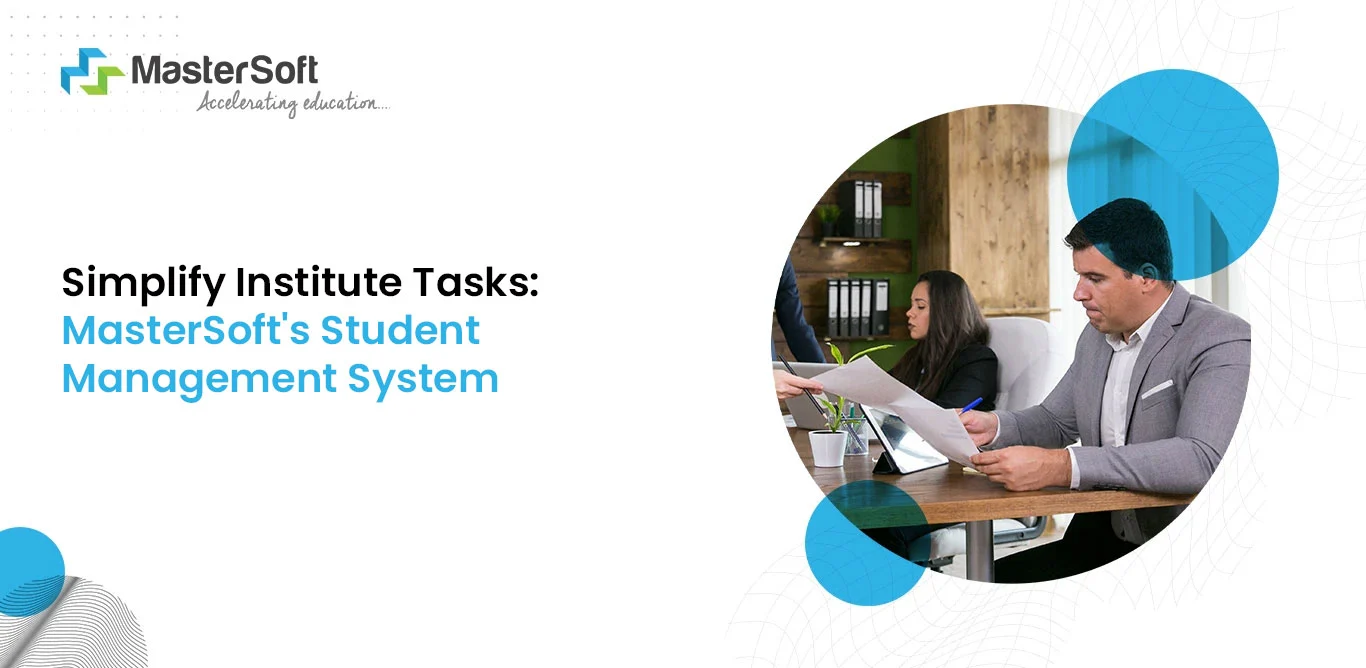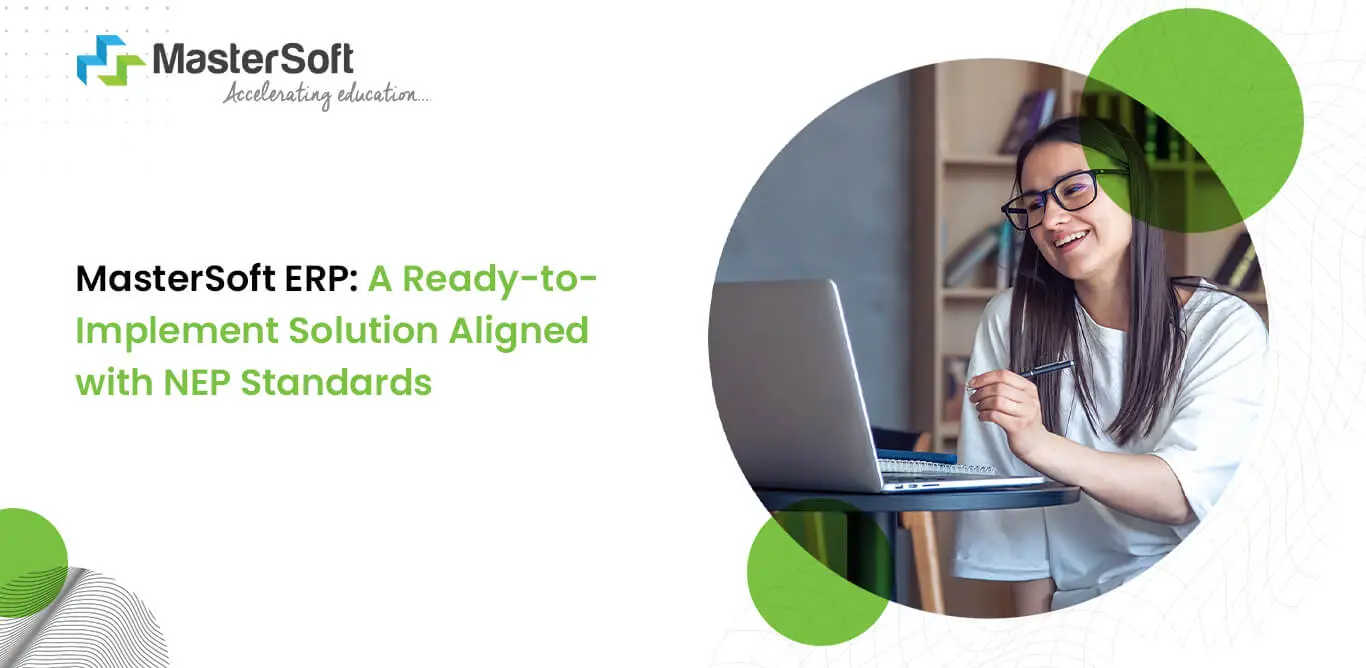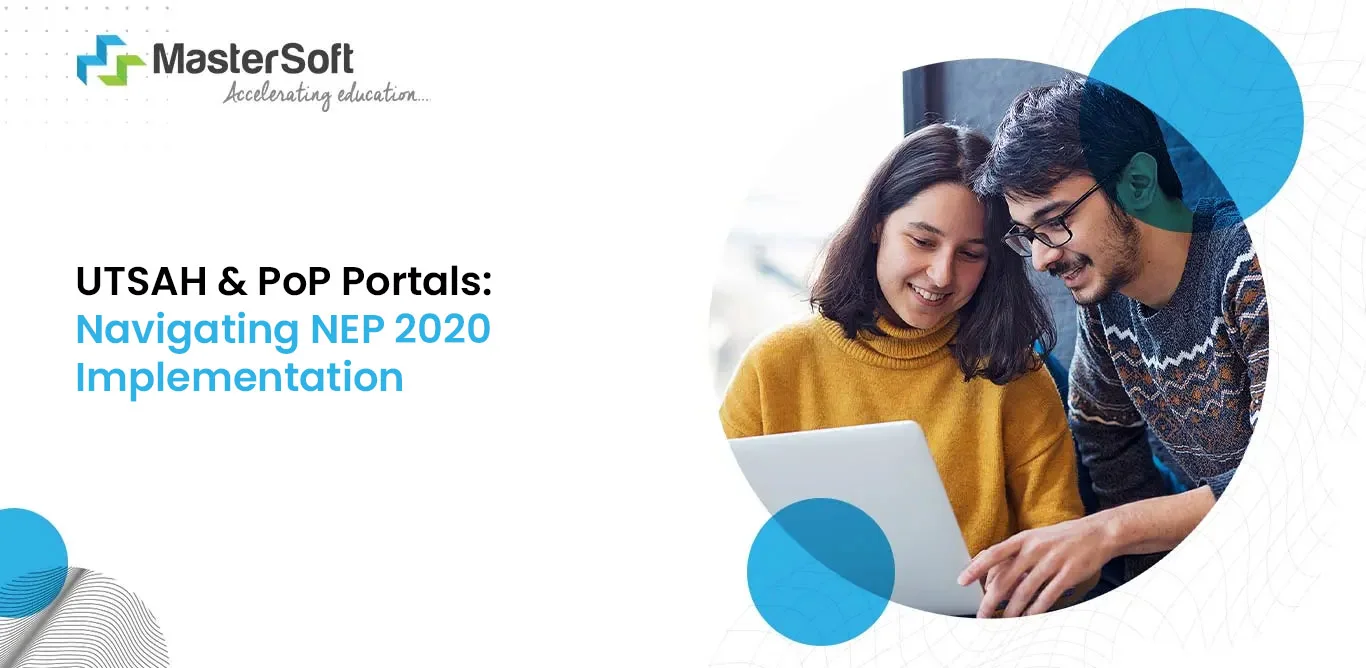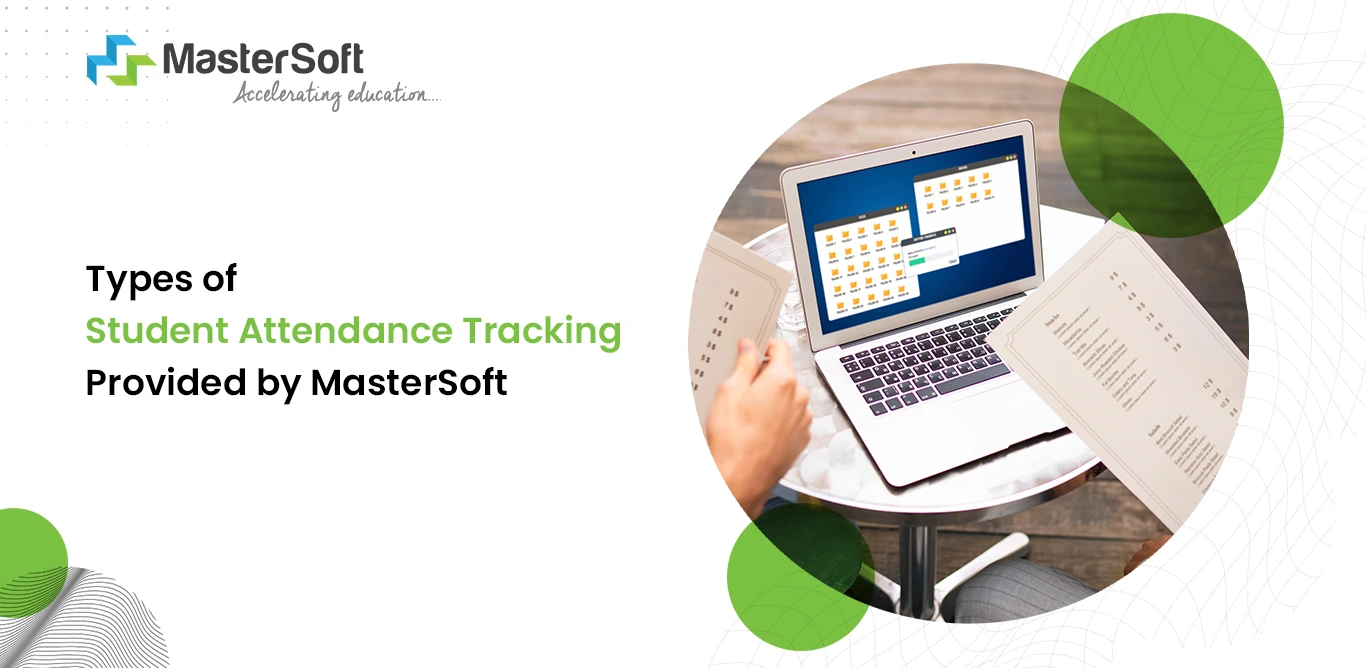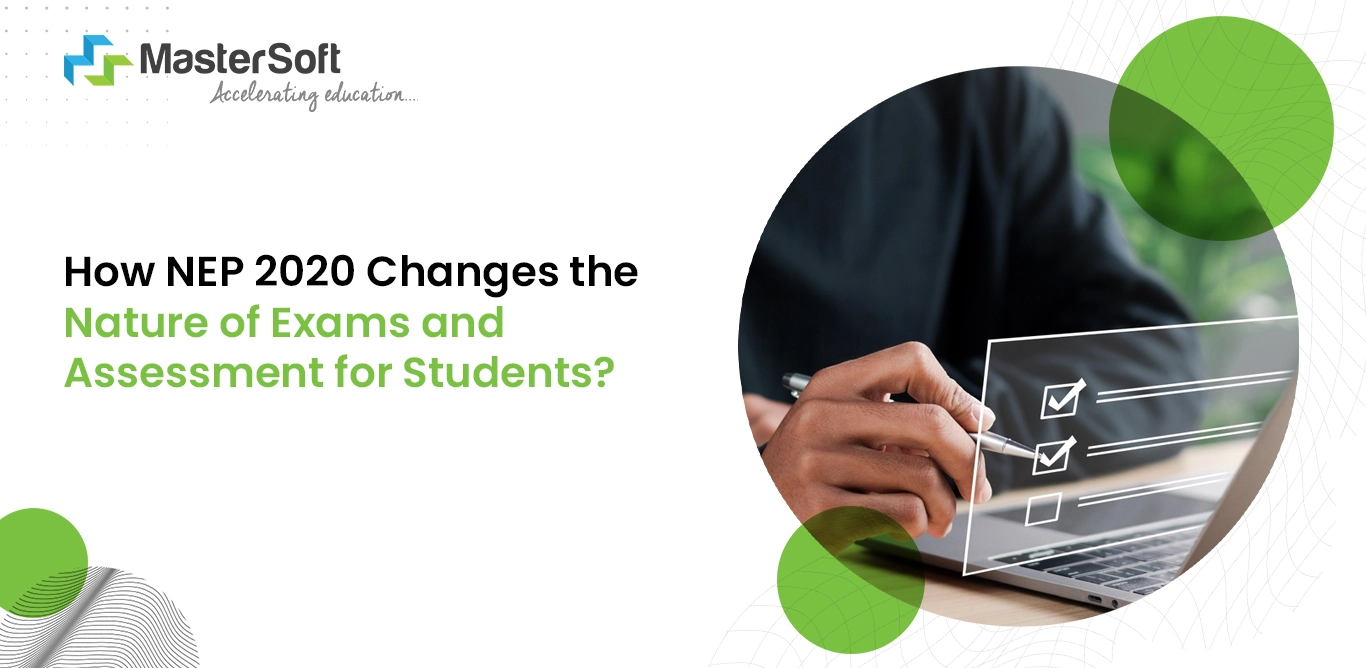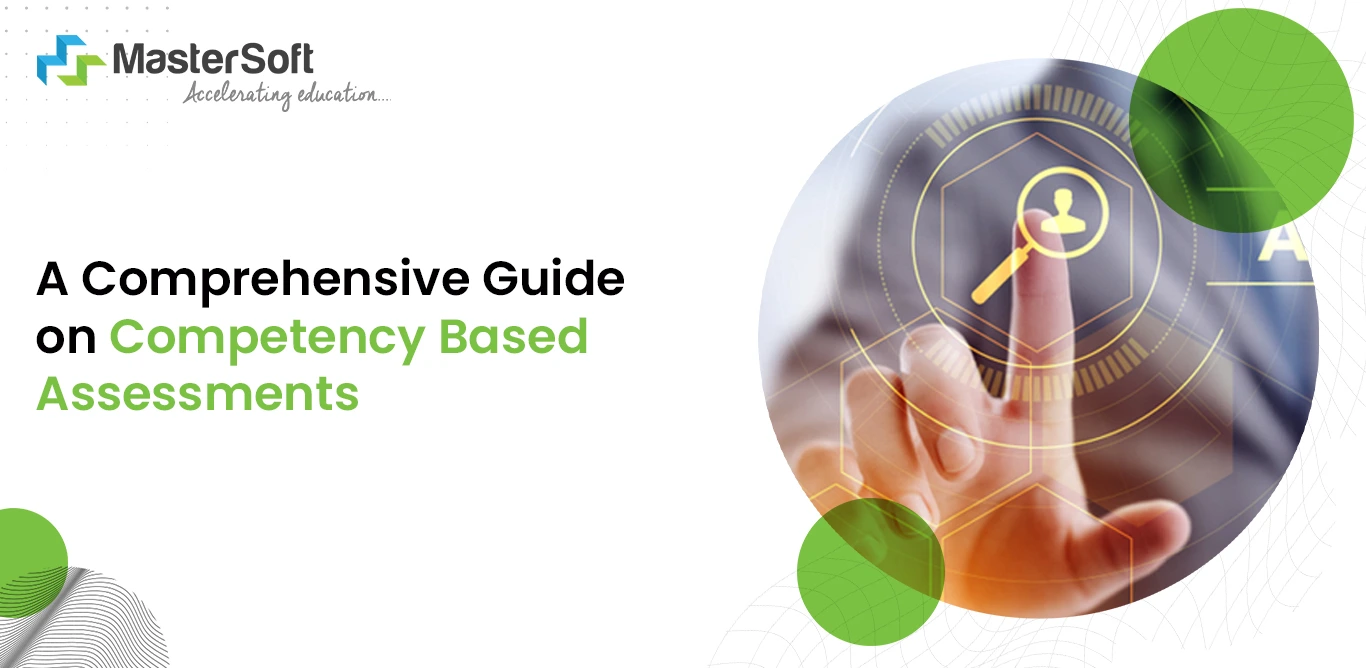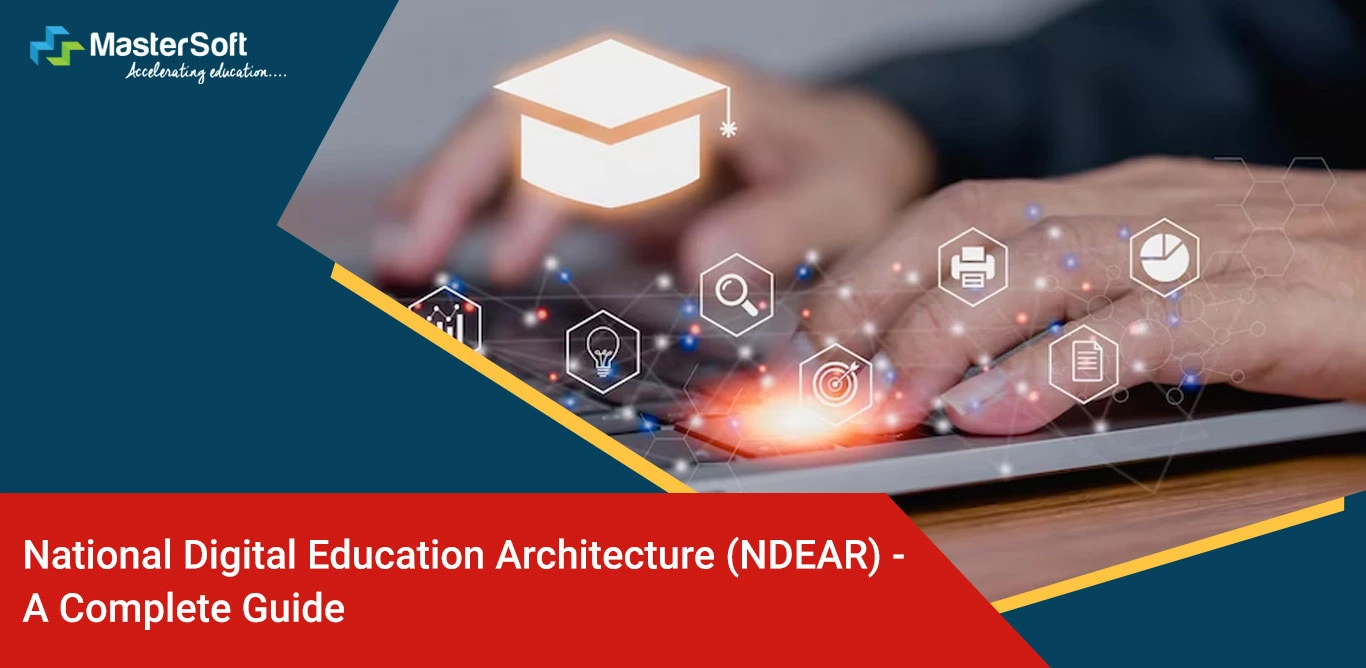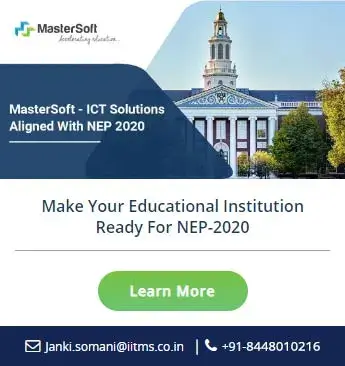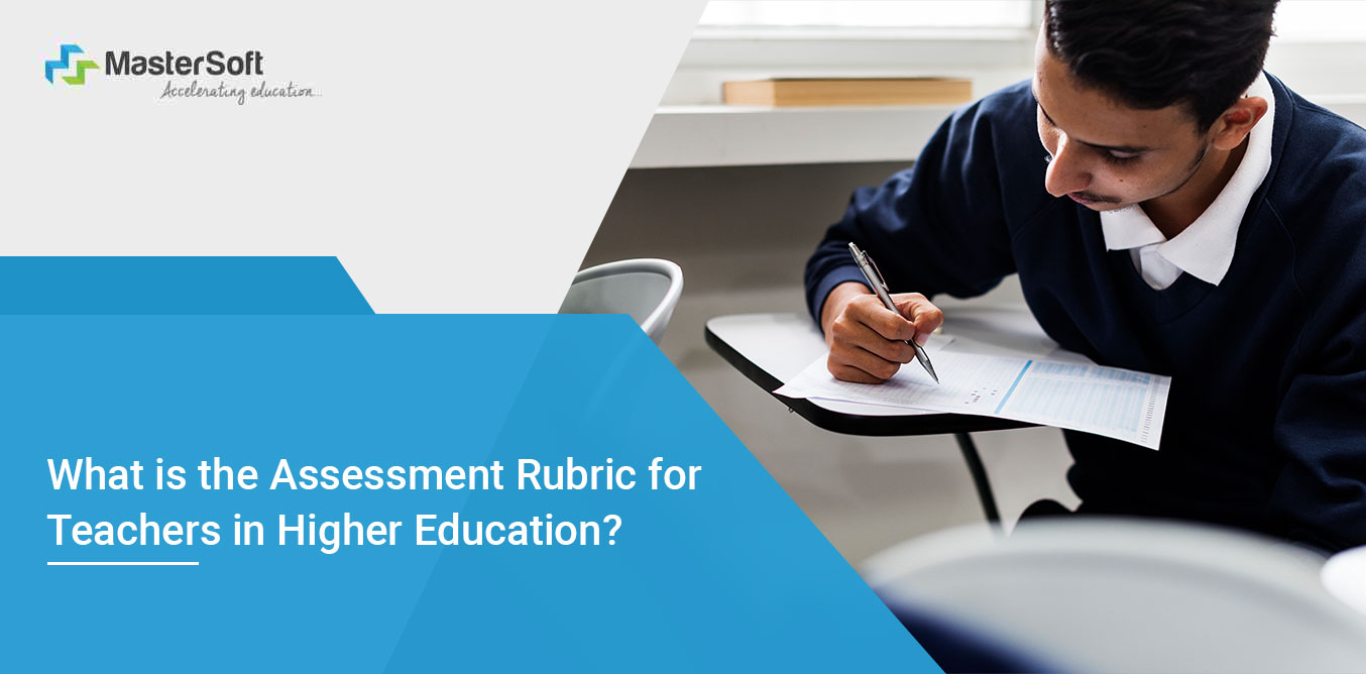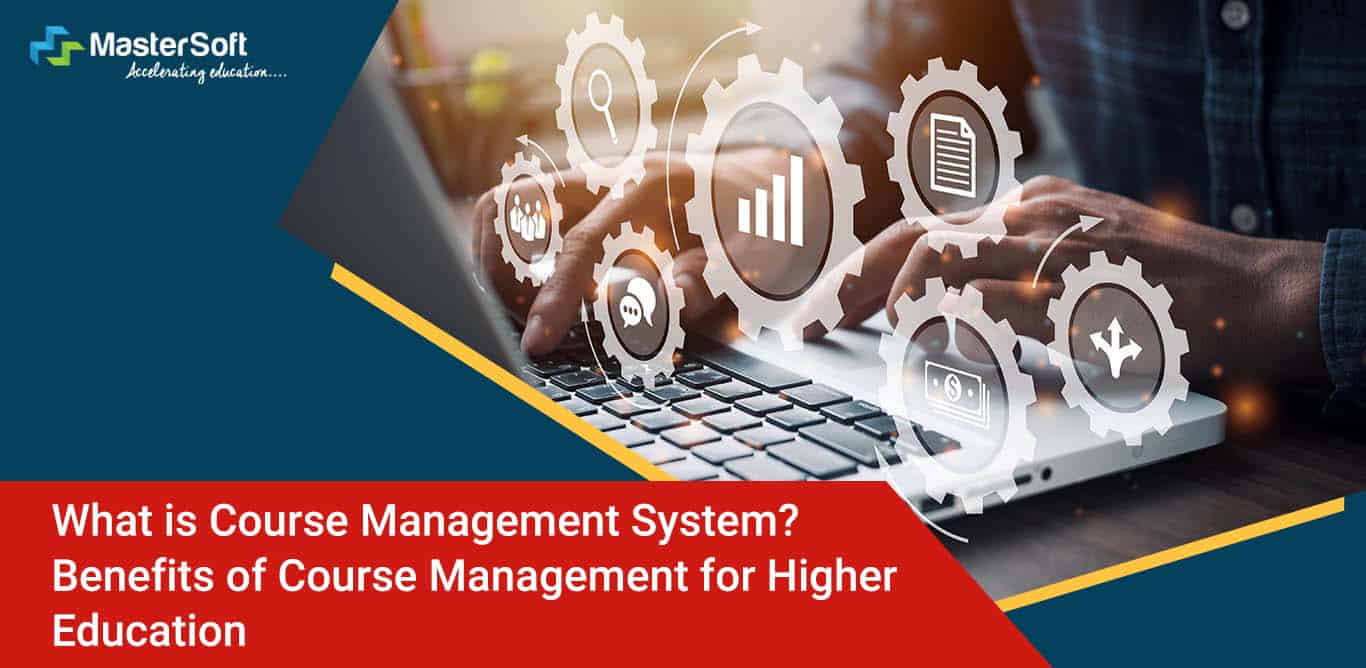21, August 2023
Education is a basic human right and a key driver of societal progress. It helps in empowering individuals, promoting economic development, and fostering social cohesion. Unfortunately, access to quality education remains a major challenge for many people worldwide.
Moreover, in recent years, the topic of quality education and its impact on bridging the student learning gap has gained significant attention, especially with the introduction of the National Education Policy (NEP) 2020 in India.
The NEP 2020 aims to revolutionise the education system and ensure access to quality education for all, thereby reducing disparities in student learning outcomes.
NEP 2020 New Academic Structure Explained - 5+3+3+4 Education System
What is the Importance of 'Education for All'?
Education is the cornerstone of personal and community development. It equips individuals with the necessary knowledge, skills, and values to lead productive and fulfilling lives. Furthermore, it plays a pivotal role in breaking the cycle of poverty and reducing inequalities in society.
When every individual has access to high-quality education, it leads to higher economic productivity, improved health outcomes, and increased social connection.
Furthermore, the 2030 Agenda for Sustainable Development, set by the United Nations, acknowledges the transformative power of education by including Quality Education (SDG 4) as one of its goals. The goal emphasises the need to ensure inclusive and equitable quality education and promote lifelong learning opportunities for all.
However, achieving this ambitious objective requires addressing several barriers that hinder access to quality education for millions of people worldwide.
Barriers to Accessing Quality Education:
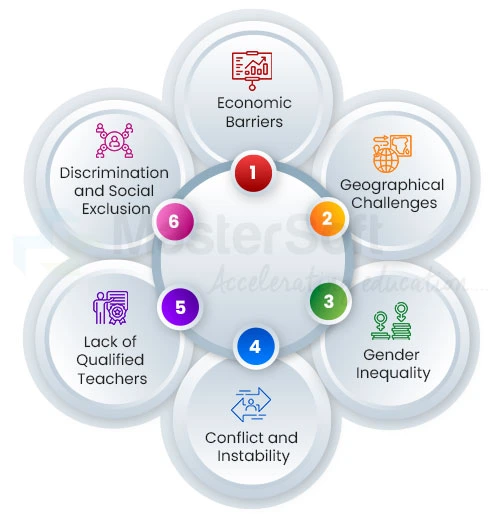
-
Economic Barriers:
Economic disparities are one of the biggest hindrances to accessing quality education in India. Many families from low-income or marginalised communities struggle to afford school fees, uniforms, textbooks, and other essential educational resources.
Thus, children from economically disadvantaged backgrounds often miss out on educational opportunities, leading to a widening learning gap.
-
Geographical Challenges:
In remote and rural areas of India, the availability of schools and educational infrastructure is limited. The vast geographical expanse makes it difficult for children to access schools regularly.
Long distances to schools, a lack of proper transportation options, and inadequate facilities hamper the educational prospects of students in these regions.
-
Gender Inequality:
Gender disparities persist in education across various parts of India. Cultural norms and traditional gender roles can discourage girls from attending school, particularly in certain regions.
This further perpetuates the cycle of poverty and denies girls the chance to reach their full potential. Promoting gender equality in education is crucial for a more inclusive and equitable society.
-
Conflict and Instability:
In regions affected by conflict and political instability, ensuring access to quality education becomes a daunting task. Disrupted schooling, the destruction of educational facilities, and the displacement of populations further aggravate the challenges of providing continuous and meaningful education.
How Does Technology Improve The Student Learning Outcomes?
-
Lack of Qualified Teachers:
The shortage of trained and qualified teachers is a pressing issue in India's education system. Many schools struggle to recruit and retain competent teachers, impacting the quality of education students receive.
Adequate teacher training and support are essential to enhance learning outcomes and ensure effective classroom instruction.
-
Discrimination and Social Exclusion:
Marginalised groups in India, including ethnic minorities, refugees, and individuals with disabilities, often face discrimination and social exclusion in education. This results in limited access to quality education and perpetuates social inequalities.
How to Bridge the Learning Gap in Accessing Quality Education?
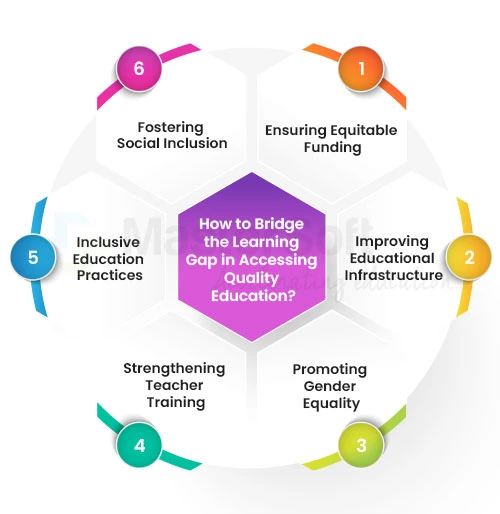
To bridge the gap in accessing quality education, concerted efforts are needed at the policy, community, and individual levels.
Some key strategies to address these barriers and promote quality education for all include:
-
Ensuring Equitable Funding:
The government should allocate sufficient funds to the education sector, with a focus on providing financial support to students from low-income families. Scholarships and grants can help alleviate economic barriers and make education more accessible.
-
Improving Educational Infrastructure:
Investing in educational infrastructure, especially in remote and rural areas, is vital to increasing school accessibility. Developing well-equipped schools and providing proper transportation facilities can improve students' access to education.
-
Promoting Gender Equality:
Implementing policies and programs that promote gender equality in education is essential. This includes creating a safe and supportive learning environment, sensitising communities to the importance of girls' education, and providing opportunities for girls to pursue education.
-
Strengthening Teacher Training:
Improving teacher training and professional development programs can improve the quality of education. Well-trained instructors are better equipped to address the diverse needs of students and contribute to better learning outcomes.
-
Inclusive Education Practices:
Emphasising inclusive education practices can ensure that students from marginalised communities and those with disabilities have equal access to quality education. This involves adapting teaching methods and providing the necessary accommodations.
-
Fostering Social Inclusion:
Promoting social inclusion and combating discrimination in education are essential steps. Schools and communities must work together to create an inclusive and welcoming environment for all students.
Moreover, NEP 2020 introduces several reforms in the education system to reduce the student learning gap, including:
Universalisation of Early Childhood Education:
The policy recognises the significance of early childhood education and proposes to provide free and quality early childhood care and education for children aged 3 to 6 years. This early intervention lays a strong foundation for a child's cognitive, emotional, and social development, reducing the learning gap at a later stage.
Multidisciplinary and Flexible Curriculum:
NEP 2020 encourages schools to offer a multidisciplinary curriculum, allowing students to choose subjects across various streams. This approach enables students to pursue their interests and talents, fostering a love for learning and reducing the pressure of rote memorisation.
Emphasis on Vocational Education:
The policy stresses the importance of vocational education from an early age, providing students with practical skills and knowledge relevant to their local contexts. This empowers them to be job-ready and contributes to a more skilled and employable workforce.
Furthermore, NEP 2020 recognises that traditional teaching methods may not cater to the diverse learning needs of students. Hence, the policy advocates the adoption of modern teaching methods to enhance student engagement and understanding.
Some of the innovative teaching methods promoted by NEP 2020 include:
Experiential Learning: NEP 2020 encourages teachers to adopt experiential learning techniques where students actively participate in hands-on activities, projects, and real-life experiences. This modern teaching method deepens understanding and makes learning more enjoyable and meaningful.
Technology Integration: The policy acknowledges the transformative role of technology in education. It promotes the integration of technology, such as smart classrooms, online learning platforms, and digital resources, to make learning more accessible and interactive.
Collaborative Learning: NEP 2020 emphasises collaborative learning, where students work together in groups, discussing ideas, solving problems, and collectively learning from each other. This approach fosters teamwork, communication skills, and mutual respect among students.
In addition to modern methods of learning, NEP 2020 stresses the importance of student management and monitoring. It encourages schools to implement robust systems to assess and track student progress regularly.
National Education Policy 2020: All You Need To Know About NEP 2020 For Schools
Some key aspects of effective student management under NEP 2020 include:
Continuous and Comprehensive Evaluation (CCE): NEP 2020 advocates the implementation of Continuous and Comprehensive Evaluation, which involves assessing students' performance through various formative and summative assessments throughout the academic year. This approach helps identify learning gaps early on and allows for timely intervention.
Individualised Attention: The policy highlights the significance of providing individualised attention to students with different learning abilities and needs. Schools are encouraged to adopt personalised learning approaches to support struggling students and nurture their strengths.
Teacher Professional Development: NEP 2020 recognises that teachers play a critical role in student management. Hence, the policy emphasises continuous professional development for teachers to equip them with the skills and knowledge to address diverse student needs effectively.
Final Thoughts,
Education for all is not just a slogan but a fundamental human right and a pathway to a better future for individuals and society as a whole. Bridging the gap in access to quality education requires a combined effort from faculty, institutions, governments, civil society, and the international community.
By addressing economic, geographical, and social barriers, promoting gender equality, investing in infrastructure, and enhancing teaching practices, we can make significant strides towards ensuring that every individual, regardless of their background, has the opportunity to receive a meaningful and transformative education. Embracing education for all is not only a moral imperative but also an investment in a more just, prosperous, and sustainable world.
Connect With MasterSoft - Your One-Stop ICT Solutions Aligned With NEP 2020
Mobile: 08448010216
Email:info@mastersofterp.com

